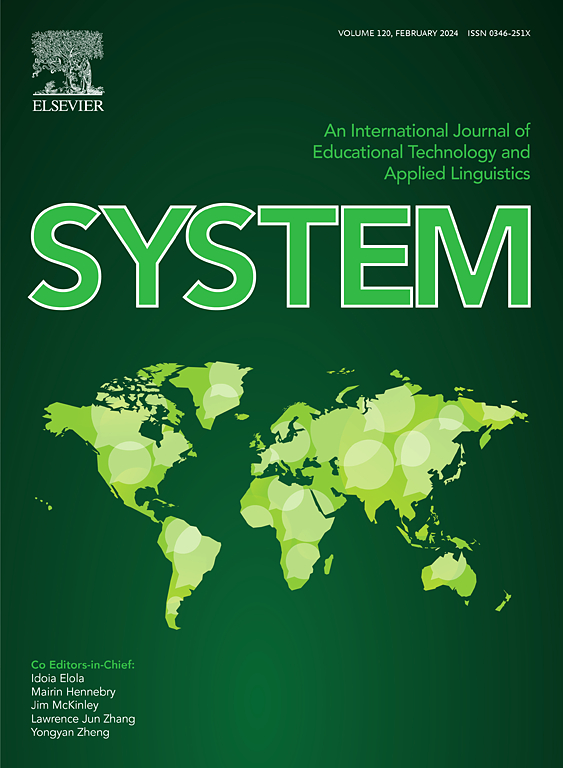Integrated effects of interactional cognitions and emotional regulation capacity on peer interaction in the L2 classroom
IF 5.6
1区 文学
Q1 EDUCATION & EDUCATIONAL RESEARCH
引用次数: 0
Abstract
Language learning research acknowledges the interconnected nature of emotion and cognition in learning behaviors. L2 interaction in particular implicates learners' thoughts (e.g., the purpose for interaction, the aim of an interactive task, the structure of spoken turns) and feelings (e.g., about the interlocutor, the topic, the setting, task performance) in the interactional behavior that ensues. In this study, we investigated how L2 learners' emotional regulation capacity and interactional cognitions affect peer interaction. Data were collected from post-secondary L2 learners of English in mainland China (N = 195) related to their emotional regulation capacity, interactional self-efficacy, and interactional engagement. We first validated all instruments through latent variable analyses. Using linear regression, we tested the hypothesis that both emotion regulation and task-specific interactional cognitions affect learners' interactional behaviors. Our results demonstrated that students' interaction-specific cognitions were strongly predictive of their interactional engagement. However, learners' emotional regulation capacity was not. Students' gender did not affect these relationships, but additional exploratory analyses revealed interesting links between learners' L2 proficiency levels and their interaction-specific cognitions and engagement. Our findings suggest that interventions to increase learners’ interactional self-efficacy can promote higher interactional engagement with peers in the L2 classroom, regardless of L2 proficiency level.
互动认知和情绪调节能力对二语课堂同伴互动的综合影响
语言学习研究承认学习行为中情感和认知的内在联系。第二语言互动尤其涉及学习者在随后的互动行为中的想法(例如,互动的目的、互动任务的目标、口语回合的结构)和感觉(例如,关于对话者、话题、环境、任务表现)。本研究探讨了二语学习者的情绪调节能力和互动认知对同伴互动的影响。本研究收集了195名中国大陆的中学以上英语学习者的情绪调节能力、互动自我效能和互动投入的相关数据。我们首先通过潜在变量分析验证了所有的工具。本文采用线性回归的方法,检验了情绪调节和特定任务互动认知对学习者互动行为的影响。我们的研究结果表明,学生的互动特定认知对他们的互动参与有很强的预测性。然而,学习者的情绪调节能力却没有。学生的性别不影响这些关系,但额外的探索性分析揭示了学习者的第二语言熟练程度与他们的互动特定认知和参与之间的有趣联系。我们的研究结果表明,提高学习者互动自我效能感的干预措施可以促进第二语言课堂中与同伴的互动参与,无论第二语言熟练程度如何。
本文章由计算机程序翻译,如有差异,请以英文原文为准。
求助全文
约1分钟内获得全文
求助全文
来源期刊

System
Multiple-
CiteScore
8.80
自引率
8.30%
发文量
202
审稿时长
64 days
期刊介绍:
This international journal is devoted to the applications of educational technology and applied linguistics to problems of foreign language teaching and learning. Attention is paid to all languages and to problems associated with the study and teaching of English as a second or foreign language. The journal serves as a vehicle of expression for colleagues in developing countries. System prefers its contributors to provide articles which have a sound theoretical base with a visible practical application which can be generalized. The review section may take up works of a more theoretical nature to broaden the background.
 求助内容:
求助内容: 应助结果提醒方式:
应助结果提醒方式:


